As announced last week, the second DLC for Steel Division: Normandy 44, Back to Hell, will feature 4 new divisions, 2 exclusive ace models, as well as 7 historical missions, including 5 in cooperative play. Let’s start this new round of divisional accounts with one of Great Britain’s most famous (and most requested by the community) WW2 division: the 7th Armoured Division, a.k.a “The Desert Rats“.
From Immobile Farce …
The 7th Armoured Division traces its origins to the Matruh Mobile Force, a brigade-sized cavalry unit created in Egypt from 1935 to face the threat of Italian military build-up in Libya & Abyssinia. Despite its name, the Mobile Force was severely ill-equipped and hardly able to move at all, being usually referred to as the Immobile Farce within its own ranks.
Things began to change from 1938 when it was decided to increase it to division strength. Placed under the command of Major-General Percy “Hobo” Hobart, it started receiving additional units, including a motor battalion, 25-pdr guns & Cruiser tanks to replace its obsolete Vickers (medium) tanks. But shipping the full complement of an armored division took time and the new division would be far from being entirely equipped at the outbreak of the war in September 1939.
… to the Desert Rats
In December 1939, Hobart was replaced by Major-General Michael O’Moore Creagh at the head of the Mobile Division. On February 16th, 1940, the division received its definitive designation as the 7th Armoured Division and designed its famous insignia which will give it its nickname: the Jerboa mouse.
On September 9th, 1940, Italian Field Marshal Rodolfo Graziani (reluctantly) initiated Operazione E, the invasion of Egypt. His 10th Army advanced some 90 km past the border before setting camps and establishing a series of fortified positions. For the next three months, a desert version of the Phony War prevailed in Egypt, with both sides sitting on their positions. But on December 8th, the British Western Desert Force with elements from 2nd NZ Division, 4th Indian Division & 7th Armoured Division (all three being far from their full complement) began Operation Compass: making the best of use of their superior mobility against the more numerous but static Italian troops, WDF quickly defeated their fortified camps one after the other before they could support each other. The ensuing pursuit of the fleeing Italian troops back to Libya culminated with the unsung battle of Beda Fomm on February 6-7th, 1941, when elements from the Desert Rats managed to cut through the desert to intercept the Italian line of retreat along the coast between Benghazi & El Agheila.
Between the early “Camps Battle”, the pursuit & Beda Fomm, the WDF had killed or captured over 150.000 Italians, that is the entire Italian 10th Army save for a few thousand men and nine (of Babini’s) tanks! And 7th Armoured played no small part in this outcome.
Darkest Hours
Compass & Beda Fomm had taken its toll on the Desert Rats, both men and equipment. The division was brought back to Cairo for refitting, receiving new Crusader tanks in the process. Meanwhile, Hitler had sent Erwin Rommel to restore the situation of his Italian allies in Afrika and in the course of a few weeks the later had reversed it in favor of the Axis: the British had been pushed back near the Egyptian border again and Tobruk was surrounded.
7th Armoured took part in all of the ill-fated Operation Battleaxe in June 1941 before being once again pulled back for refitting in Egypt, where its straw of bad luck continued, suffering about 1.000 casualties in a friendly fire RAF raid. Yet, it didn’t remain inactive there, for it organized and sent small combined arms groups, made up of armored cars, converted self-propelled guns on trucks and lorried infantry & artillery to harass the Germans & Italians in the desert. Those units were called “Jock Columns“, after the officer who conceived them, Lt-Colonel John Charles “Jock” Campbell, commander of the 7th Armoured Division‘s Support Group.
In May-June 1942, the Desert Rats took part in the hard-fought series of engagements collectively known as the Battle of Gazala… which didn’t fare much better than Battleaxe, ending with the British army retreating deeper into Egypt.
Payback
In July, 7th Armoured was held in mobile reserve, licking its wound but also providing battlegroups to deliver counter-blows against German probes during the First Battle of El Alamein, which brought Rommel’s drive West to a final halt.
One month later, General Sir Bernard Law Montgomery took command of Eighth Army, and with him the Desert Rats‘ luck was about to change. It received new equipment, increased in strength and trained relentlessly to prepare for the next offensive. Starting October 23rd, 1942, the Second Battle of El-Alamein saw 7th Armoured initially only used in diversionary attacks against the far right of the Axis front, near the Qattara Depression. But as soon as November 26th, most of the division was pulled back and placed in reserve to exploit a breakthrough. On November 30th-31st, after a mock attack to show itself in the South, the division was moved all the way to the North, just behind the frontline.
On November 3rd, with the German front showing signs of imminent collapse, Monty released 1st & 7th Armoured Division forward. The next day, the two divisions met what was left of their Axis counterparts for the showdown of the Desert War: 15. Panzer had 10 tanks left, 21. Panzer 14, while Italian Littorio division had 17 and Ariete 29 serviceable ones (and 40 in repair workshops). However weak they were, those veteran divisions put a tough fight. Yet by the end of the day, the three former were forced to retreat while the latter, surrounded, lost all its tank and was destroyed the next day by the Desert Rats.
Acknowledging his defeat, Rommel abandoned his unmotorized Italian units and tried to save his more mobile divisions by retreating West. It was the beginning of the end for the once mighty DAK which retreat would only end in with the capitulation of its remnants in Tunisia on May 13th, 1943.
It was during the pursuit toward Tunisia that the Desert Rats‘ commander, General Harding, was wounded by a shell while leading from the front in his jeep and replaced by Major-General Sir George W. E. J. “Bobbie” Erskine.
The Desert Rats didn’t take part in the campaign of Sicily and only a brief part in the Italian one, from September 15th to November 1943, but nonetheless proved instrumental in defending the Salerno beachhead and breaching through the Volturno Line.
Monty’s Praetorians
On December 23rd, 1944, General Montgomery had been appointed as 21st Army Group commander in England, in order to lead the invasion troops in France. Upon leaving Italy, Monty requested some of his old desert divisions, the 7th Armoured and 50th & 51st Infantry, to serve under his command on this new theater. A wish granted. And thus the Desert Rats returned to England as Monty’s Praetorians. For some of them, they were returning home for the first time since the outbreak of the war!
The seeds of the future tragedy awaiting them in Normandy may have been planted there. While the 50th (Northumbrian) Infantry Division underwent a large turnover of personnel, surely lowering the division’s overall experience, 7th Armoured & 51st (Highland) Division received no, or barely any, new blood. They retained their esprit de corps and their firm belief in their Praetorian Guard status. General Verney, Erskine’s successor, observed on the day he took command of the Desert Rats that “they (7th AD & 51st ID) were a law unto themselves: they thought they need only obey those orders that suited them“.
The two divisions also showed signs, only noticed a posteriori, of battle-weariness. The Desert Rats & Highlanders believed they had done their fair share of fighting and dying since 1939 and that others should now be put in harm’s way. Experienced soldiers might be better in combat than rookies, but unlike the former which on D-Day and later in the campaign, such as the 15th (Scottish) Infantry Division, performed generally well and improved over the course of the campaign, the veterans had a tendency of watching over their shoulders, too aware of the many dangers surrounding them. Also, reunited with their family for the first time in years, many battle-hardened veterans, men whose bravery was not to be questioned, would return from leave to the division asking for a posting in a less exposed position.
Finally, the Rats, experts among Allied troops in desert warfare, were unfamiliar with European warfare and landscape. Used to open spaces and to navigate with the sun or compass in a sea of dunes, they were unsuited to the cramped Norman battlefield. Besides, based on its desert accomplishments, 7th Armoured Division was earmarked as a special “breakthrough division” to be almost entirely equipped with the new fast Cromwell tanks, a vehicle they were unfamiliar with. At least did they retain some 36 Shermans in the form of 17-pdr Fireflies.
7th Armoured Division landed in Normandy, at Gold Beach, on D-Day +1, June 7th, 1944. It immediately took part in Operation Perch, an attempt at encircling Caen which stumbled into the mighty Panzer-Lehr. The Desert Rats were therefore sent into a flanking maneuver to force Lehr to pull back. But on their way, the Desert Rats fell into one of the most famous ambushes in tank warfare History …
Villers-Bocage
Unable to adjust to the Norman bocage and conduct proper reconnaissance of their surroundings, the Desert Rats were “swanning” through the village of Villers-Bocage on June 13th. They were completely unaware how close they had come from schwere SS-Panzer-Abteilung 101 which had just taken position in their path to cover Panzer-Lehr‘s open flank. But so were the Germans: SS captain Michael Wittmann, commander of s.SS-Panzer-Abt. 101‘s 2. Kompanie, was taken completely by surprise upon watching the 7th AD‘s vanguard emerging from Villers-Bocage.
Yet, having spotted the enemy first and acting with boldness, Wittman attacked the British column. Destroying a Cromwell driving in front of him and blocking the road, he went back up the same road used by the 7th AD, blasting every tank and vehicles he passed by. Meanwhile, further away along the road, the rest of Wittmann’s company attacked the head of the column. Within Villers-Bocage itself, Wittman was engaged in several close-range tank duels from which his tank miraculously emerged (mostly) unscathed until disabled by a 6-pdr gun, forcing its crew to evacuate on foot. In a matter of a quarter of an hour, Wittmann and his company left about 15 tanks and as many various transport vehicles ablaze.
The battle soon expanded in size, with 7th Armoured regrouping while Panzer-Lehr was bringing in reinforcements to the German side. Recovering from their surprise, the Rats started evening the score, stalking and destroying Tigers & Panzer IV unsupported by infantry at close range in Villers-Bocage’s streets and vicinities. But when the tide of battle was finally turning in 7th AD‘s favor, the Germans finally received infantry reinforcements in the form of two battalions of 2. Panzer‘s grenadiers. Attacking immediately, they forced 22nd Armoured Brigade to retreat and regroup in an all-around defensive position.
June 14th became known as “The Battle of the Island”, with 22nd Armoured Brigade surrounded and attacked from several directions by Panzer-Lehr & s.SS-Pz-Abt. 101. Subjected to bombardments, attacks by infantry and tanks, the 22nd lost ground, had positions overwhelmed, its headquarters was even threatened, yet always managed to restore its perimeter, on its own or with the help of the RAF and nearby US 1st Infantry Division‘s artillery providing fire support. When the night came, the Germans finally pulled out.
Although the Rats were able to recover quickly from a beating which would have routed many less-experienced units, and fought well afterward, Villers-Bocage remained a stain of the division’s honor. Although 7th Armoured later took part in several other operations (Goodwood, Spring, Bluecoat), it was never able to regain its old prestige in the eye of Monty and other British commanders, and its every action was regarded with skepticism. The day of reckoning for Villers-Bocage was approaching: in early August, General Erskine and about 100 men from the division, as well as the corps commander, were sacked.
After Normandy
Under General Lloyd-Verney’s command, the Desert Rats took part in the race toward the Seine River, then in the liberation of Belgium & the Netherlands, although it wasn’t involved in Market Garden. It entered Germany in January 1945, ending the war in Hamburg which it had captured. Moved to Berlin, it participated in the Allied victory parade.
The division remained in Germany as part of the BAOR after the war, before converted to an infantry brigade in April 1958.
THE 7TH ARMOURED DIVISION INGAME
The Desert Rats‘ distinctive features are:
- Their battle experience: few Allied division fields as many veteran and elite troops. Yet, those battle-hardened troops are especially to be found in units using older equipment they are familiar with from the Western Desert Campaign, especially infantry, Stuarts (most of them”jalopied”) & Portee guns.
- Their massive use of Cromwell tanks in almost every role possible, from mainstream combat vehicle to command, recon (from the 8th King’s Royal Irish Hussars, which get their own distinctive N. Irish acknows:) ) and even OP role. This fast and well-armed tank gives the Rats an edge in maneuver… but its weak armor makes it clearly the underdog in tank to tank duel. At least the division has retained some Fireflies for that.
- Speaking of Cromwell’s weak armor, 7th Armoured featured a unique command Cromwell named “Abbot of Chantry” which belonged to Troop Leader Bill Bellamy. Its crew prided itself in having the fastest tank in the division, maybe even in the British Army, and only realized why after an encounter with a German 20mm Flak gun: the low-caliber shells had nonetheless dented their armor, prompting an investigation. It concluded that Bellamy had been given by mistake a training tank in soft steel! Meaning he and his crew were roaming the battlefield almost naked, 20mm being the most the tank armor could withstand. After much debates, Bellamy and his men elected to retain “Abbot of Chantry“, considering that the extra armor wouldn’t help them much in case of an encounter with a “cat”, while the extra-speed could save their life. Therefore the Desert Rats ingame get access to a unique phase A under-armored but extra fast command Cromwell tank.
- Their recon tab has its pros and cons. The Rats proved unable to adjust to the Norman environment, acting as if they were still in the desert. Therefore, they have access to strong “recon under armor”, but lack light and stealthy ones.
- Their use of Wasp Mk.IIc, allowing the flame-thrower vehicle to carry a small squad.
- Their AA is entirely self-propelled, either Crusader AA tanks or Bofors Portees like the Free French & Poles.
- Their reliance on speed makes it difficult for the artillery to follow, hence if they have access to all the regular British artillery options, they can only select very few ones.
- Their air support options include Mosquito PR.XVI reconnaissance plane and Mitchell II (a.k.a American B-25)
- The division’s economy is among the strongest in A, the strongest Allied one in B, but then dive down in C.
Steel Division: Normandy 44 – Back to Hell will be available on February 13th, and you can preorder it right here, right now.


![Percy_Hobart[1]](https://eugensystems.com/wp-content/uploads/2018/01/Percy_Hobart1-224x300.jpg)
![AfricaMap1[1]](https://eugensystems.com/wp-content/uploads/2018/01/AfricaMap11-300x113.jpg)
![1024px-Map_of_siege_of_Tobruk_1942[1]](https://eugensystems.com/wp-content/uploads/2018/01/1024px-Map_of_siege_of_Tobruk_19421-300x228.jpg)

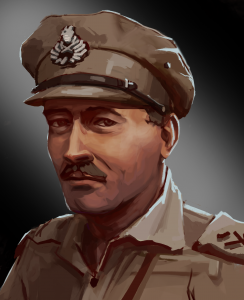
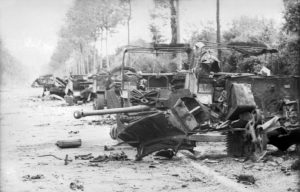

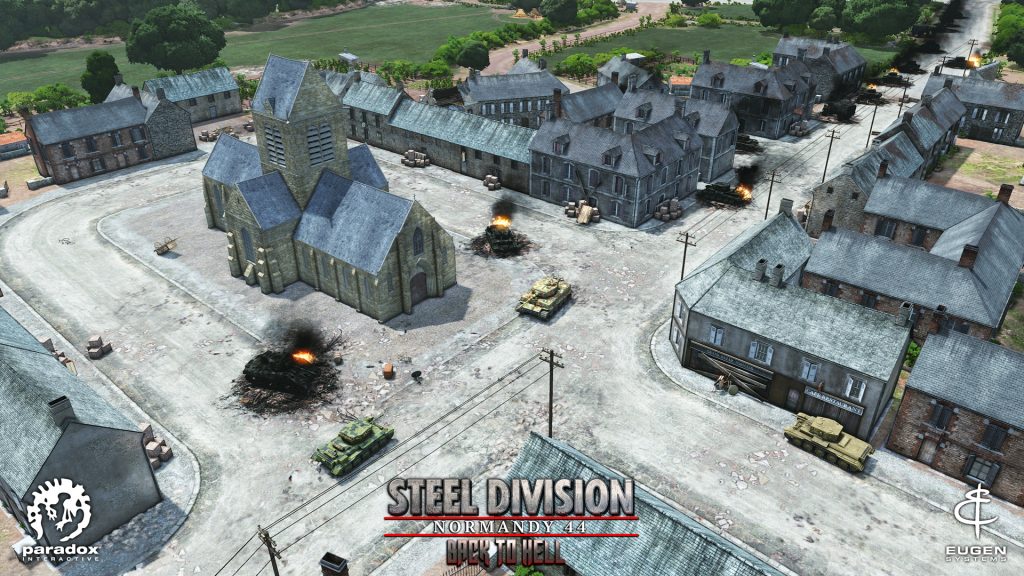
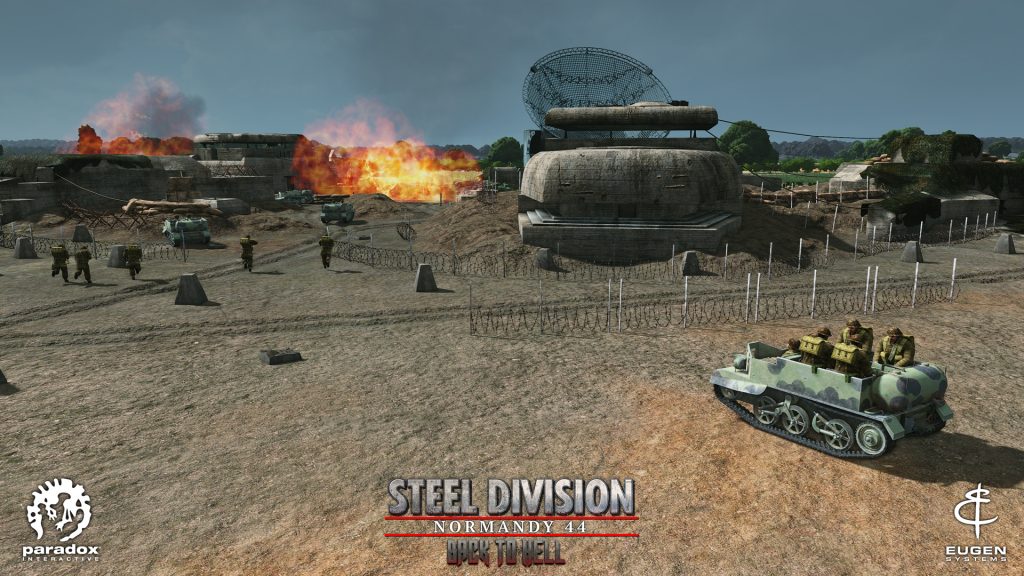



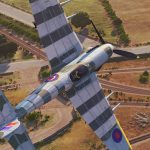
No Comments